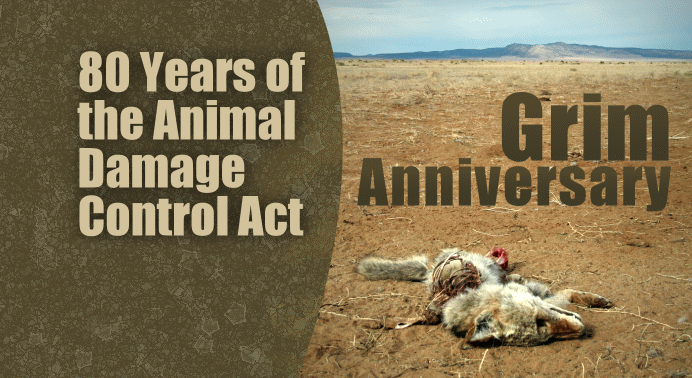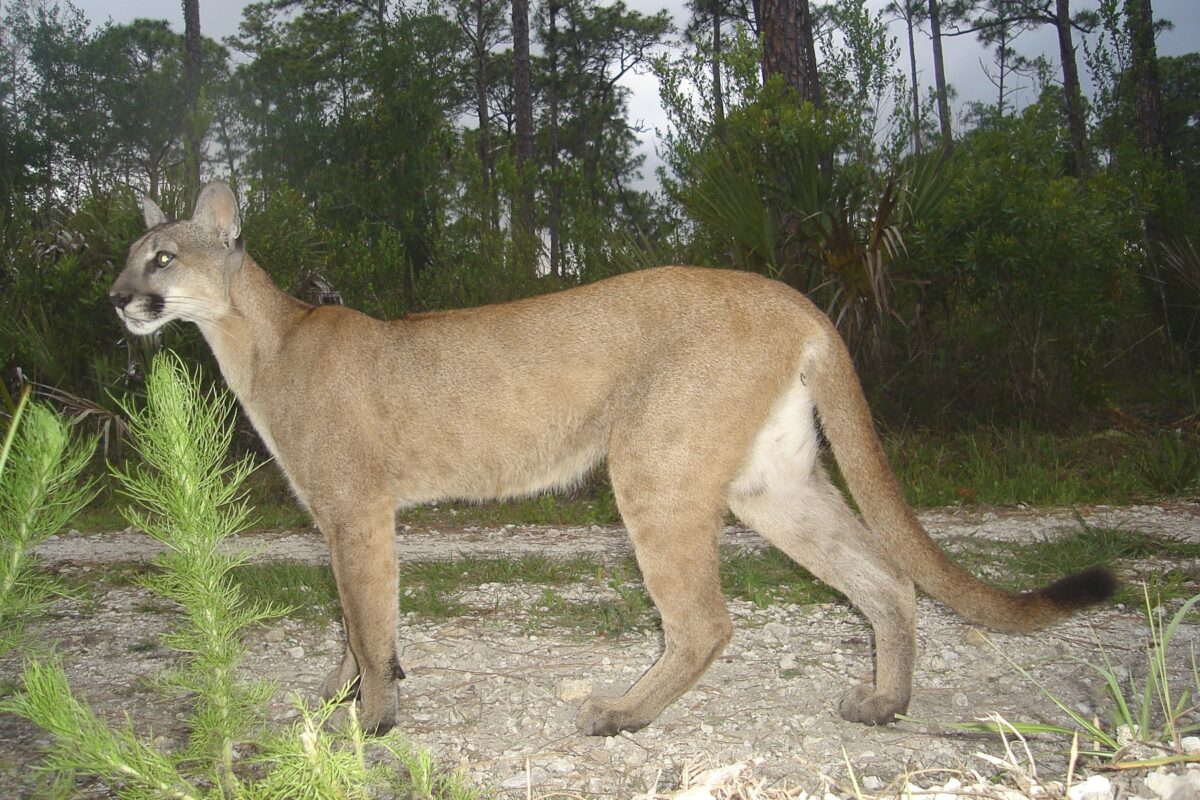
Grim Anniversary: Eighty Years of the ADC Act
Guest Commentary by Camilla Fox
Reprinted with permission from the Animal Welfare Institute
The ADC Act authorizes the Secretary of Agriculture to “conduct campaigns for the destruction or control” of animals considered threats to agriculture/ranching operations. Eighty years ago, this Act codified the federal government’s willingness to engage in predator control in the service of private economic interests. Under this arcane law, government agents continue to trap, snare, poison, and shoot any animal who “may” harm livestock, aquaculture, or agricultural crops.
The ADC Act authorizes the Secretary of Agriculture to “conduct campaigns for the destruction or control” of animals considered threats to agriculture/ranching operations. Eighty years ago, this Act codified the federal government’s willingness to engage in predator control in the service of private economic interests. Under this arcane law, government agents continue to trap, snare, poison, and shoot any animal who “may” harm livestock, aquaculture, or agricultural crops.
Given the green light by the Act, the USDA’s euphemistically named Wildlife Services (WS) program conducts a quiet, relentless war against North America’s wildlife. Few Americans have heard of the WS program. Even fewer know that that their tax dollars pay federal agents to shoot wolves, coyotes and other predators from low-flying aircraft and to set poison bait and snares to trap and kill them.
In 2009 alone, WS killed more than 4 million animals in the U.S., including 115,000 mammalian carnivores; close to 90,000 were coyotes. Much of this killing takes place on public lands throughout the West. Each year, roughly $120 million are spent on this senseless and ecologically reckless program. State and county governments are provided incentives to contract with WS through matching cooperative funding agreements.
The WS program has even been used to bypass state wildlife protection laws. A recent case in point: California law bans the use of poison, and severely restricts the use of snares, leghold or metal-jawed traps. Nevertheless, the California Department of Fish & Game (DFG) is paying the USDA $600,000 under a three-year contract to use such methods to capture and kill mountain lions who prey on endangered bighorn as well as domestic sheep. Even though USDA is doing the bidding of the state agency, DFG and USDA assert that the federal agents are not bound by California law.
When reports filtered in that WS agents were killing mountain lions inhumanely and indiscriminately, without regard to actual threat, Public Employees for Environmental Responsibility (PEER) – a national non-profit alliance of local, state and federal scientists, law enforcement officers, land managers, and others dedicated to upholding environmental laws – blew the whistle. In addition, PEER’s Legislative Council issued a legal opinion concluding that federal employees in this case are bound by state law. (This opinion was requested of California State Senate Natural Resources Chairwoman Fran Pavley. The opinion carries no weight of authority, however, and it is unclear as of this writing whether it will influence mountain lion killing under the DFG/USDA contract.)
An Alternative Approach
Not all jurisdictions have elected to continue employing WS “help” controlling predators. A dozen years ago, Marin County, California, was spending $60,000 a year on a lethal coyote control program on behalf of sheep ranchers in the county.
When citizens began to protest the indiscriminate use of traps and the use of dangerous poisons such as Compound 1080, the Marin County Board of Supervisors voted to cease contracting with the federal agency and instead adopt a community-based program known as the Marin County Strategic Plan for Protection of Livestock and Wildlife – the first of its kind in the nation and a plan still in place today. The cost-share program relies solely on non-lethal predator deterrent methods, including livestock guard dogs and llamas, improved fencing, and night corrals.
In 2007, Marin County Agricultural Commissioner Stacy Carlsen, who oversaw implementation of the plan, told Bay Nature magazine that during the first six years of the program, sheep losses fell and the program cost the county over $10,000 a year less than the old one. This innovative model sets a precedent for encompassing a wider range of community needs and values, where both agriculture and protection of wildlife are deemed important by the community.
A New Paradigm
Greater understanding of the ecological importance of native carnivores and increasing public opposition to lethal “control” have led to growing demand for humane and ecologically sound conservation practices. Despite shifting public attitudes and values, however, traditional predator/wildlife management techniques persist, leading to increasing tension between conservationists and management institutions. This tension is reflected in increased litigation, legislation, and public ballot initiatives.
On this 80th anniversary of the Animal Damage Control Act, it’s time for Congress and the Obama administration to reform the Act – or do away with it altogether. We need a new paradigm in the way we coexist with native carnivores and other wildlife – one that recognizes their important ecological roles and right to exist.




 Facebook
Facebook Twitter
Twitter Send Email
Send Email


